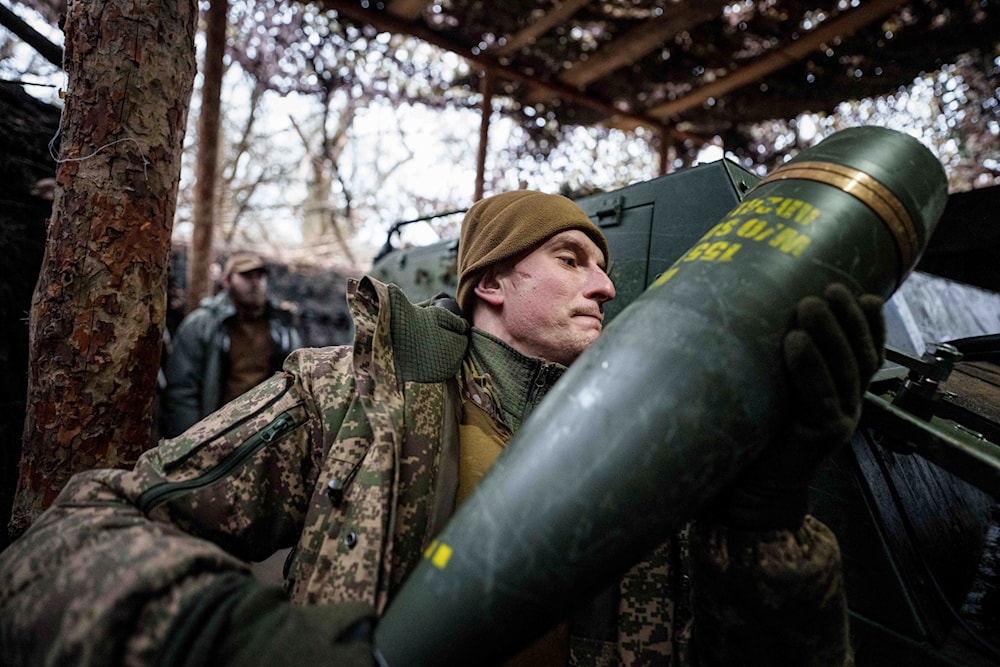Europe faces crucial shortage in gunpowder, TNT as Ukraine aid soars
Explosives manufacturers in Europe are facing several obstacles, including supply chain disruptions and very high demand, as they try to cater to Europe's needs for material used in munitions.
-

A Ukrainian serviceman of the Azov Brigade carries artillery 155mm shell into a self-propelled howitzer Dita before firing toward Russian positions at the frontline in Donetsk region, Ukraine, Thursday, Jan. 23, 2025 (AP)
Europe is facing a critical shortage of explosive materials, at a time when the availability of such material takes priority, forcing manufacturers to dramatically escalate operations to meet the continent's demand as it boosts its military aid to Ukraine ahead of the limited ceasefire with Russia.
Since the war in Ukraine broke out in 2022, Nitrochemie Aschau, a subsidiary of the German defense giant Rheinmetall, has significantly expanded its production capacity, raising its output by 60% and actively constructing new facilities to boost capacity by an additional 40% by mid-2025, according to Bloomberg on Friday.
Bloomberg added that the company hired an additional 300 people, welcoming workers from the automotive and chemicals sectors to strengthen its workforce, in a bid to keep its production lines running all day to meet Europe's demand for ammunition.
Rheinmetall aims to increase its gunpowder production by more than 50% by 2028, but even that may not be enough. CEO Armin Papperger told Bloomberg that the company might need to nearly double its output to over 20,000 metric tons to meet growing demand.
European governments tapped into their munitions stockpiles to arm Ukraine, revealing critically low reserves. Since then, efforts to ramp up artillery, missile, and bullet production have pushed supplies of gunpowder, TNT, and other explosives to the limit.
With only a few propellant manufacturers, including Rheinmetall and the French contractor Eurenco, Europe aims to boost production by over 50%, adding 10,000 metric tons annually—an increase equivalent to nearly six new facilities the size of Nitrochemie Aschau.
On the other hand, the European Union is planning to increase the production of explosives by more than 4,300 metric tonnes, an increase of around 30%, however, it only has one major factory serving the continent. There are plans to build a second factory in Finland.
Bloomberg reported that alternative explosives manufacturers, including PETN, HMX, and RDX are also facing difficulties meeting Europe's demand since the start of the Russo-Ukraine war. The Norwegian manufacturer Chemring Nobel stated that it has seen very high demand, and noted that it has been running at full capacity and its order book extends for several years.
One key obstacle facing these companies is the prodcurement of raw materials essential to the production of munitions such as cotton, which is an ingredient for nitrocellulose, also known as guncotton.
Most of the cotton used for nitrocellulose must be imported from China, the world’s largest producer and a close ally of Russia. While alternative sources, such as wood pulp-based materials, exist, they are not yet produced at the scale needed to meet market demand.
This comes as Europe tries to bolster its military aid to Ukraine, following the withdrawal of United States aid to Kiev, while EU leaders in the continent try to aim for more independence from the United States.

 3 Min Read
3 Min Read









